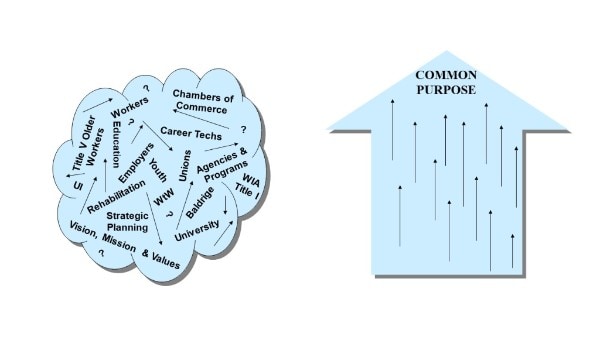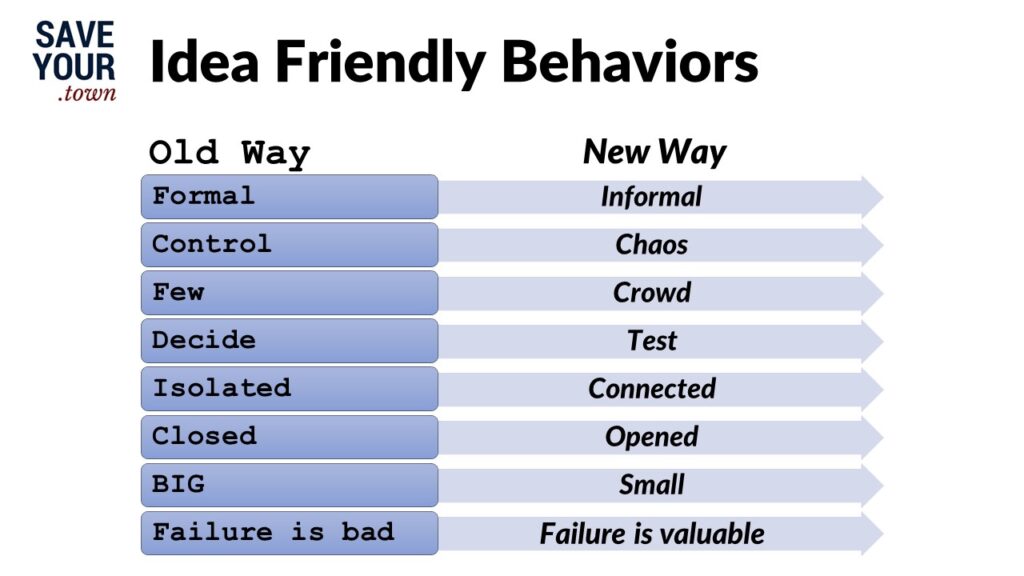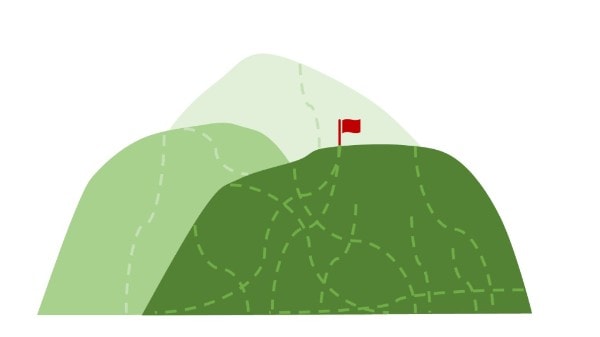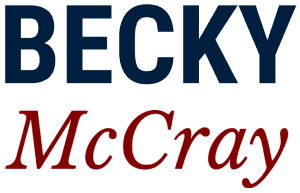Clouds of chaos ☁ and arrows of alignment ⬆
Back in my workforce development days circa 2003, I used this pair of diagrams with all the partnering organizations to illustrate the value of alignment:

The cloud and the big arrow were our workforce system. All the little arrows were organizations, officials, programs and pieces of the workforce system. We were definitely a cloud, not an arrow back then. If we could just agree on one common purpose to bring us all into alignment, we’d all be pulling together and the system would be bliss! It was a nice idea.
We could apply those same diagrams to your community. The little arrows inside are all your organizations and officials. Right now, everyone is working on their own thing without much sense of common purpose. They all think they are headed the right direction. The result is an awful lot of working at cross purposes. That’s the cloud of chaos we’re in right now. It’s a big drag on our efforts, wasting a lot of our work.
If we just had one common purpose to bring us all into alignment…
I quit using these diagrams for small towns because I dislike the idea of one small group getting to decide what the goal should be for everyone. It’s a little too close to trying to control, decide, streamline and force. Too much Old Way, not enough New Way.

But Heidi Khokhar from RDI and I were talking about Idea Friendly, and a light went on for me. Heidi uses a similar diagram in her community vision process. She’ll ask participants whether they think the chaos results in an inviting atmosphere. The response is almost always no with comments such as, “Who wants to get involved when you don’t know what it’s all leading to?” or “which action is really making a difference, where do you enter?”
Heidi was interested in my take on how Idea Friendly and all this new individual action doesn’t just add more chaos and more working at cross purposes in our towns. I’m actually a big fan of the chaos, in that no one is in charge. All ideas are good enough to test. But the answer to her concern was actually in something else she told me.
Heidi also told me that when she helps a community with a vision, she could just about write it for them in the first session. It wouldn’t reflect them perfectly, but it would be close. A thriving rural community, or some variation of that, is what we all want.
But she doesn’t do that to them, short circuiting the process. As the people of the community continue to meet and gather and discuss, they become more aware of each other. They learn what others are thinking, and they become better aligned. Knowing what other groups and people are working on, they start to swing their arrows a little more toward alignment.
And that’s where it gets closer to Idea Friendly. When we Build Connections we’re doing the same process, but through action together rather than discussion. You can do it with discussions, but let’s be honest, those sessions are not very attractive to most people. It’s great for reaching the people who are always at the center of things, but regular people are just not that interested in planning and visioning meetings. And people who have to work 2 jobs to get by usually don’t turn out for them either.
Community happens when people talk to each other, and they talk to each other when they do things together.
When we cut down the barriers to entry, when we offer small but meaningful ways to Take Small Steps and be part of our big idea, we can draw diverse people in more easily. When we treat everyone’s ideas (and I do mean everyone’s) with the same Idea Friendly openness, we stop pushing people away with our formality and our slow progress.
Looking back at my notes on that original cloud diagram from fifteen years ago, I see I wrote, “Many different pieces, not many connections.” Exactly. When we Build Connections, we grow more aligned.
All this chaotic action brings us into better alignment because it connects us. Consensus emerges from action because we Build Connections. When our idea doesn’t work out, we know more about other ideas we can be part of.
If I had to draw a diagram for us now, it might be something like many paths up the same hill. That hill is our thriving rural community goal. We don’t have to march up single file. We can take the scenic route, or climb the hard slope. We can Gather Our Crowd and head up together with others who are excited by our idea.

And from the top of that hill, we can see further and keep moving towards progress. In fact, someone is probably already out there ahead of us, calling us forward. There’s direction and movement, but not one set goal.
Thanks, Heidi, for helping me refine this concept. We’ll all keep working on it together, ok?
Keep shaping the future of your town,
Becky
PS – I’ll be at SXSW Saturday and Sunday and the SXSW Cities Summit Monday and Tuesday. If you’re here, too, let’s catch up in person!
